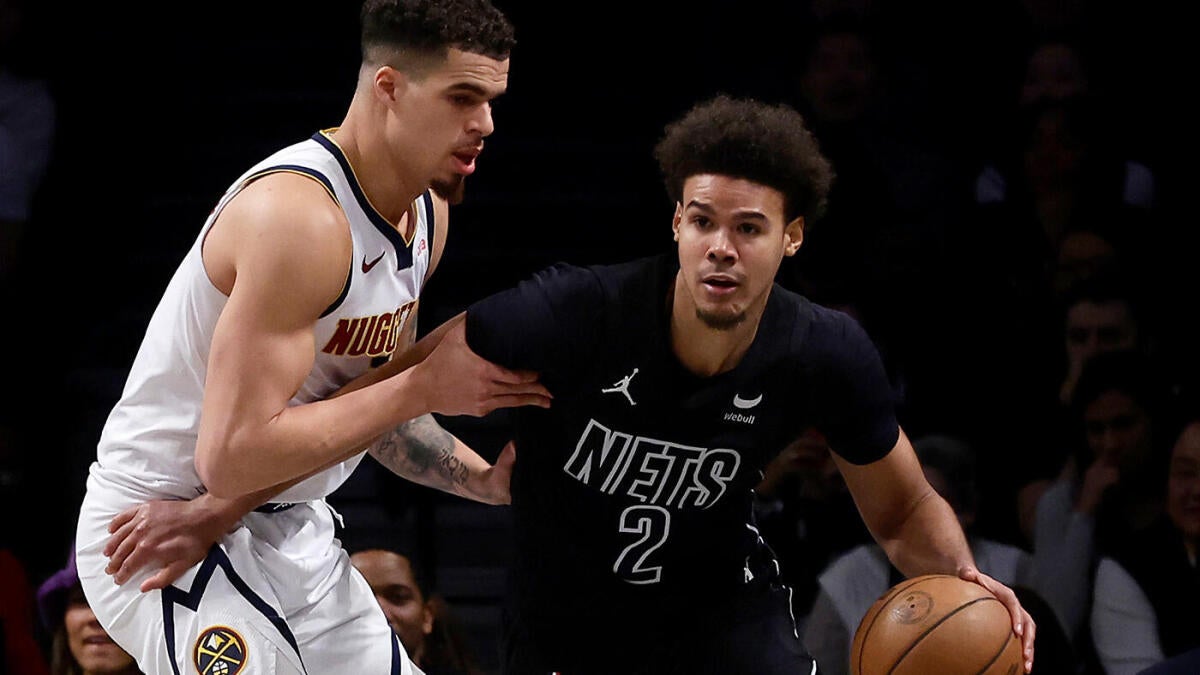The recent trade involving Michael Porter Jr. has sparked significant discussion in the NBA, highlighting the contrasting priorities and strategic visions of the Denver Nuggets and Brooklyn Nets. The deal, which saw the Nuggets send Porter Jr. to the Nets in exchange for Cameron Johnson and an unprotected 2032 first-round draft pick, underscores the divergent goals and outcomes each team aims to achieve. This transaction exemplifies how two franchises with different timelines and objectives can find mutual benefit in a single move.
The Evolution of Michael Porter Jr.
Michael Porter Jr. entered the NBA as a highly touted prospect, but his career has been marked by a mix of promise and challenges. His time with the Denver Nuggets was characterized by moments of brilliance, particularly on the offensive end, where his scoring ability and shooting touch stood out. However, his journey was also fraught with injuries and defensive inconsistencies, which limited his role on a championship-caliber team. Despite contributing to Denver’s 2023 title run, Porter Jr.’s fit within the Nuggets’ long-term plans became increasingly uncertain. His potential was undeniable, but his inability to provide consistent defensive impact and his injury history made him a less ideal fit for a team focused on sustained success.
Contrasting Priorities: Nuggets and Nets
The trade reflects the stark differences in the strategic approaches of the Denver Nuggets and Brooklyn Nets.
Denver Nuggets: Prioritizing Stability and Flexibility
For the Nuggets, the trade was a calculated move to bolster their roster around Nikola Jokic, the reigning three-time MVP. Denver’s primary objective was to acquire a reliable “3-and-D” wing who could contribute immediately and provide defensive stability. Cameron Johnson, known for his shooting and defensive versatility, fits this role perfectly. His addition addresses a key need for the Nuggets, offering consistency and reducing the injury risk associated with Porter Jr. Furthermore, the unprotected 2032 first-round pick provides Denver with valuable future assets, allowing them to maintain flexibility and sustain their championship aspirations. This trade underscores the Nuggets’ commitment to building a balanced roster capable of contending year after year.
Brooklyn Nets: Betting on Potential and Development
The Nets, on the other hand, are in a rebuilding phase and see Porter Jr. as a high-upside asset around which they can build their future. Despite his injury history and defensive shortcomings, Porter Jr.’s scoring ability and youth make him an attractive piece for a team looking to develop a young core. The Nets are betting that a change of scenery and a more prominent role could unlock Porter Jr.’s full potential, transforming him into a foundational player for their franchise. This move aligns with Brooklyn’s long-term vision of developing talent and creating a competitive team for the future.
Evaluating the Trade: A Win-Win Scenario
Analysts have largely graded this trade as a win for both teams, as it addresses the specific needs and goals of each franchise.
Denver’s Gains: Immediate Impact and Future Assets
For the Nuggets, the acquisition of Cameron Johnson provides an immediate upgrade at the wing position. Johnson’s ability to shoot efficiently and defend at a high level makes him a valuable addition to Denver’s championship-contending roster. Additionally, the 2032 first-round pick offers long-term flexibility, allowing the Nuggets to manage their salary cap and roster construction effectively. This trade demonstrates Denver’s commitment to maintaining a balanced and sustainable roster, ensuring they remain competitive in the highly competitive Western Conference.
Brooklyn’s Gains: High-Upside Talent and Development Opportunity
The Nets, meanwhile, gain a player with significant upside in Michael Porter Jr. His scoring ability and youth make him a promising piece for a team in the early stages of a rebuild. While Porter Jr. comes with risks, the Nets are betting that their developmental system and coaching staff can help him reach his full potential. This trade reflects Brooklyn’s willingness to take calculated risks in pursuit of long-term success, a strategy that could pay dividends if Porter Jr. develops into a star.
Broader Implications for the NBA
This trade highlights the complex decision-making processes that NBA teams undergo when evaluating talent, fit, and future opportunities. The Nuggets’ decision to part ways with Porter Jr. in favor of a more stable and versatile player like Johnson underscores their commitment to sustained success. Meanwhile, the Nets’ acquisition of Porter Jr. demonstrates their belief in the value of high-upside talent and their willingness to invest in player development.
The trade also serves as a case study in how teams with different timelines can find mutual benefit in a single transaction. For the Nuggets, the move ensures they remain competitive in the present while securing future assets. For the Nets, it represents a bet on the future, with the potential to develop a star player who can lead the franchise back to prominence.
Conclusion: A Strategic Alignment of Goals
In conclusion, the Michael Porter Jr. trade between the Denver Nuggets and Brooklyn Nets exemplifies how two teams with divergent goals can achieve mutually beneficial outcomes. The Nuggets have strengthened their championship window with the addition of Cameron Johnson and a valuable draft pick, while the Nets have acquired a high-upside talent who could become a cornerstone of their future success. This transaction underscores the intricate dynamics of NBA roster management, where teams must balance immediate needs with long-term vision. As both franchises move forward, the success of this trade will be measured by their ability to capitalize on the opportunities it presents. For the Nuggets, it’s about maintaining their status as a top-tier team, while for the Nets, it’s about developing Porter Jr. into the star they envision. Ultimately, this trade serves as a testament to the strategic acumen of both organizations and their commitment to achieving their respective goals.

